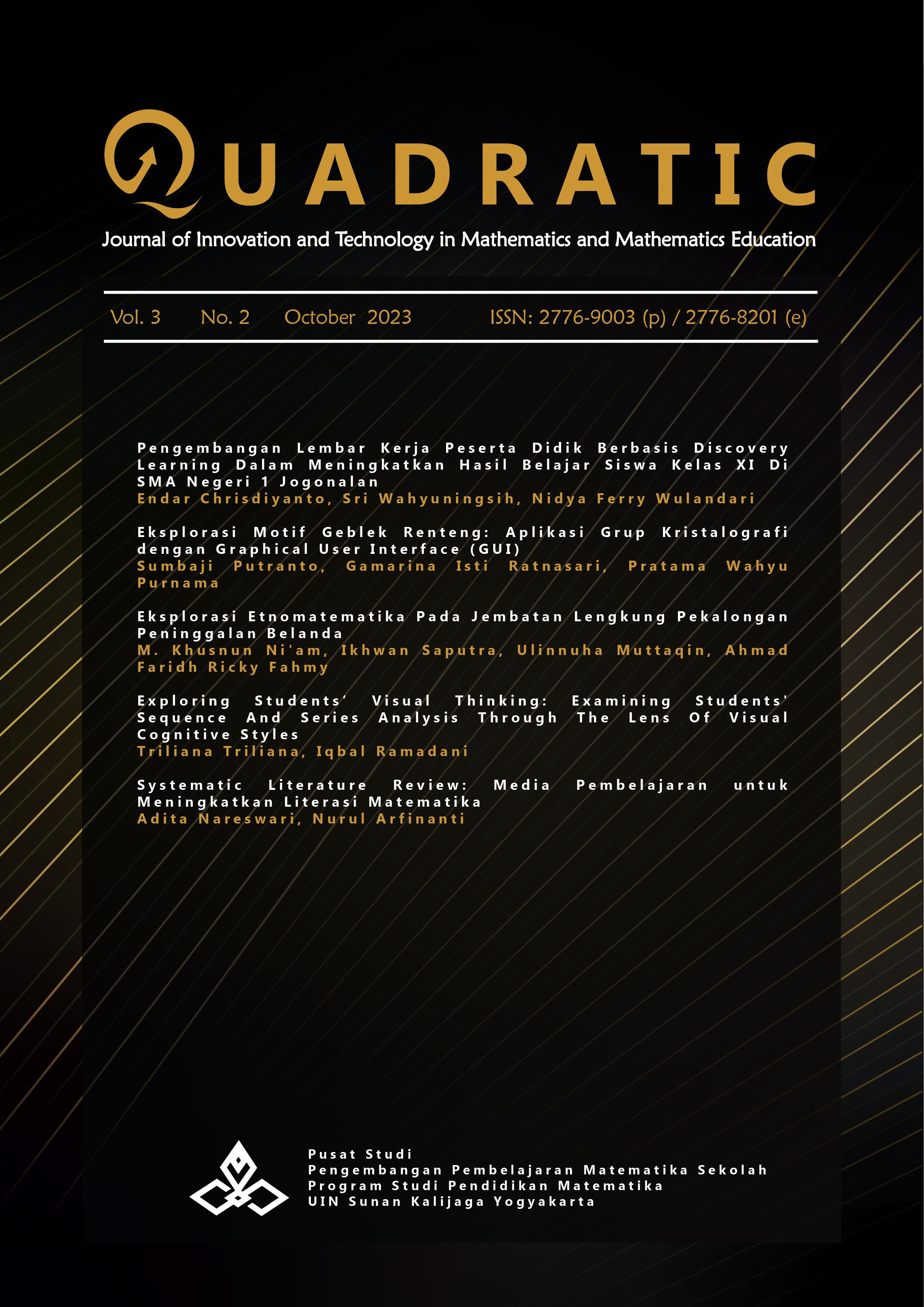Exploring Students’ Visual Thinking: Examining Students' Sequence And Series Analysis Through The Lens Of Visual Cognitive Styles
Main Article Content
Abstract
Visual thinking skill has an important role in solving mathematics problems. Visual thinking not only can be applied on the topic of geometry but also on the other topics including sequence and series. The visual cognitive styles have a relationship to mathematical abilities and types of tasks. This research aims to analyze the students’ visual thinking skill viewed by visual cognitive styles on the topic of sequence and series used grounded theory approach. The steps in this study are developing visual cognitive style questionnaire and visual thinking skill test, asking students to fill the questionnaire and do the test, and analyzing the results of questionnaires and students’ answer. The subjects of this research were 2 students at the eleventh grade (16-17 year-olds). The result showed that students with spatial visualization have better visual thinking skill than object visualization. Students with spatial visualization are very good at working on problems on indicators transforming problems or concepts into visual forms. Whereas, students with object visualization are very good at drawing for the nth term of a sequence. The analysis of this research can be used as material for consideration to make the learning design on the topic of sequence and series that is in accordance with the cognitive styles of students
Downloads
Article Details
References
Arcavi, A. (2003). The Role of Visual Representations in the Learning of Mathematics. Educational Studies in Mathematics. 52 215-241.
Blajenkova, O., Kozhevnikov, M., and Motes, M.A. (2006). Object-Spatial Imagery: A New Self-Report Imagery Questionnaire. Appl. Cognit. Psychol. 20 239-263.
Eisenberg, T., and Dreyfus, T. (1991). Visualization in Teaching and Learning Mathematics. Washington D.C.: Mathematical Association of America.
Hegarty, M., and Kozhevnikov, M. (1999). Types of Visual-Spatial Representations and Mathematical Problem Solving. Journal of Educational Psychology, 91 684-689.
Huang, C.H. (2015). Calculus Students’ Visual Thinking of Definite Integral. American Journal of Educational Research, 3 476-482.
Juandi, D., and Priatna, N. (2018). Discovery Learning Model with Geogebra Assisted for Improvement Mathematical Visual Thinking Ability. J. Phys.: Conf. Ser. 1013 012209
Kozhevnikov, M., Kosslyn, S., and Shephard, J. (2005). Spatial Versus Object Visualizers: A New Characterization of Visual Cognitive. Style Memory & Cognition, 33 710-726.
McEwan, R.C., and Reynolds, S. (2007). Verbalizers and Visualizers: Cognitive Styles that are Less than Equal Cananda: Disability Services. Counselling & Student Life, Fanshawe College.
Pitta-Pantazi, D., Sophocleous, P., and Christou, C. (2013). Spatial Visualizers, Object Visualizers and Verbalizers: Their Mathematical Creative Abilities ZDM Mathematics Education 45 199-213.
Pitta-Pantazi, D., and Christou, C. (2010) Spatial Versus Object Visualisation: The case of Mathematical Understanding in Three-Dimensional Arrays of Cubes and Nets .International Journal of Educational Research ,49 102-114.
Stylianou, D.A., and Silver, E.A. (2004). The Role of Visual Representations in Advanced Mathematical Problem Solving: An Examination of Expert-Novice Similarities and Differences. Mathematical Thinking and Learning, 6 353-387.

